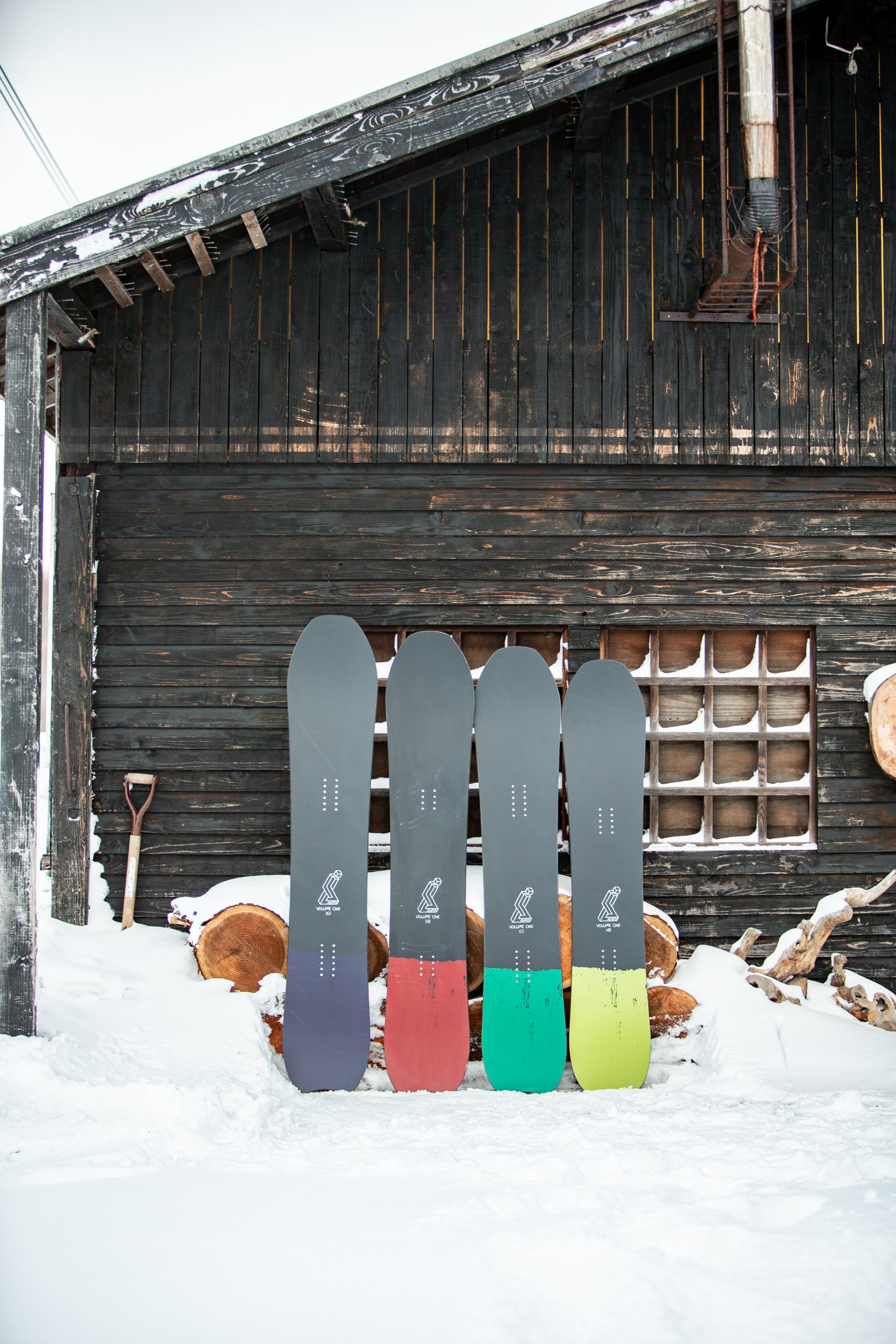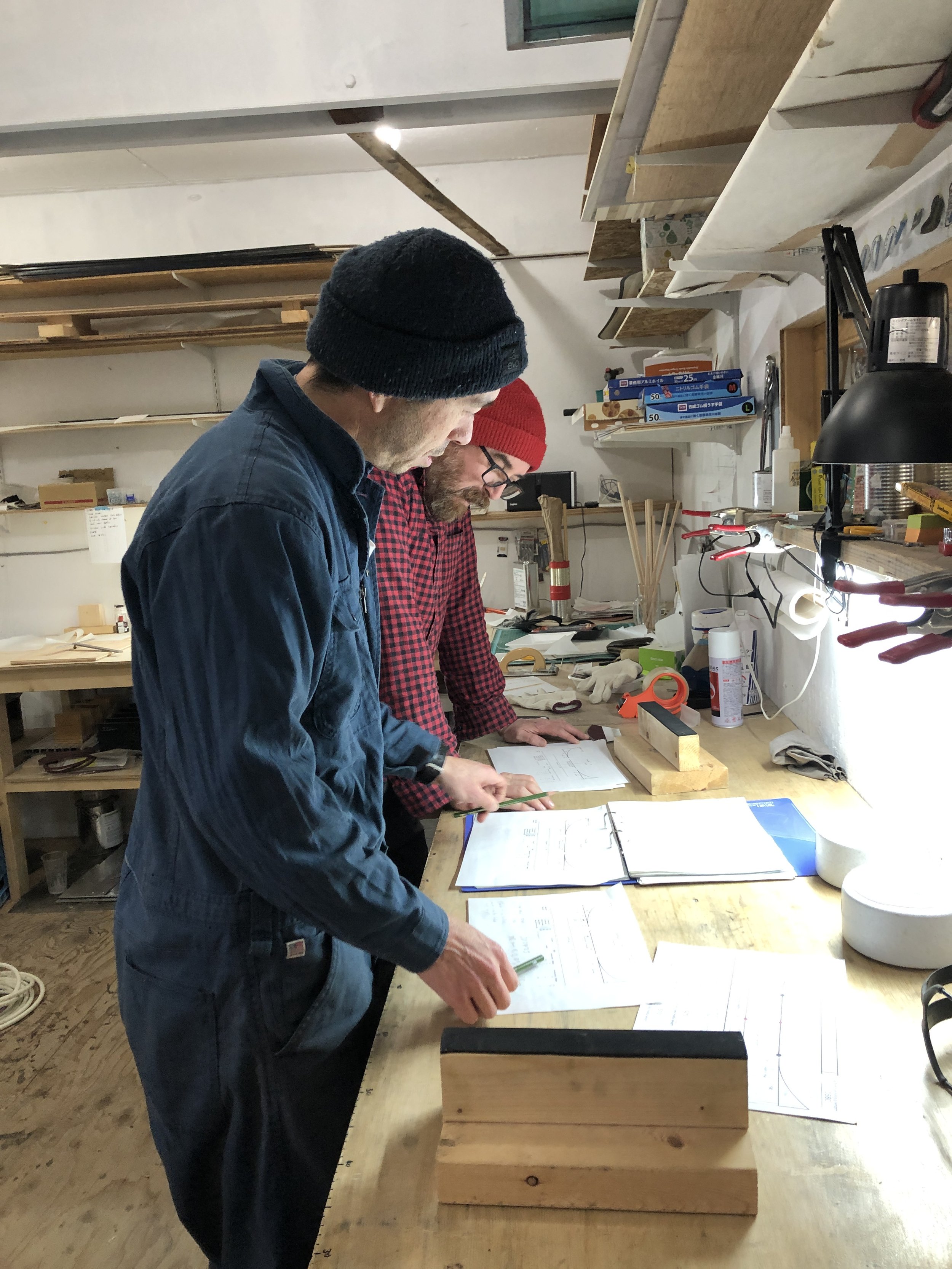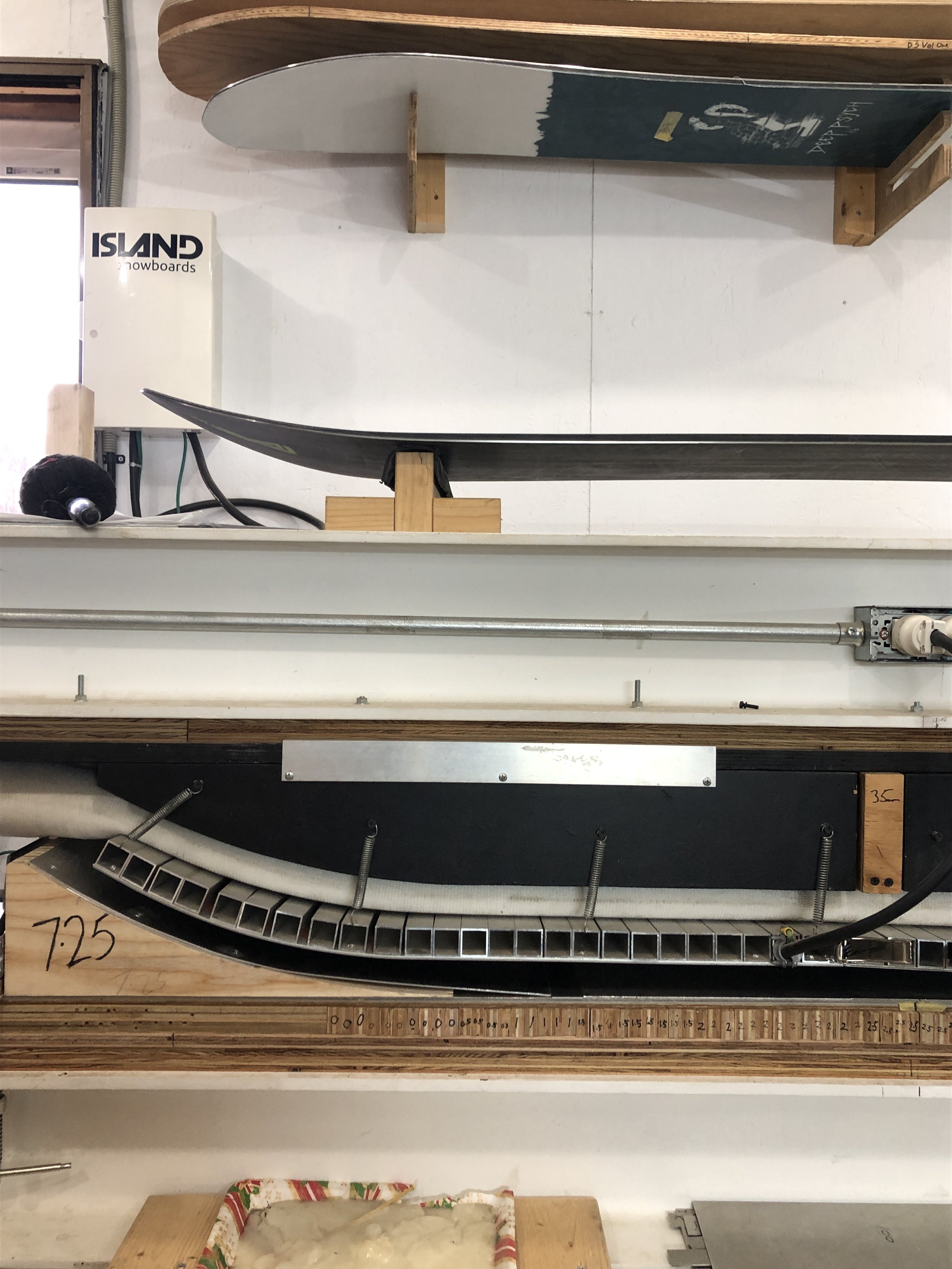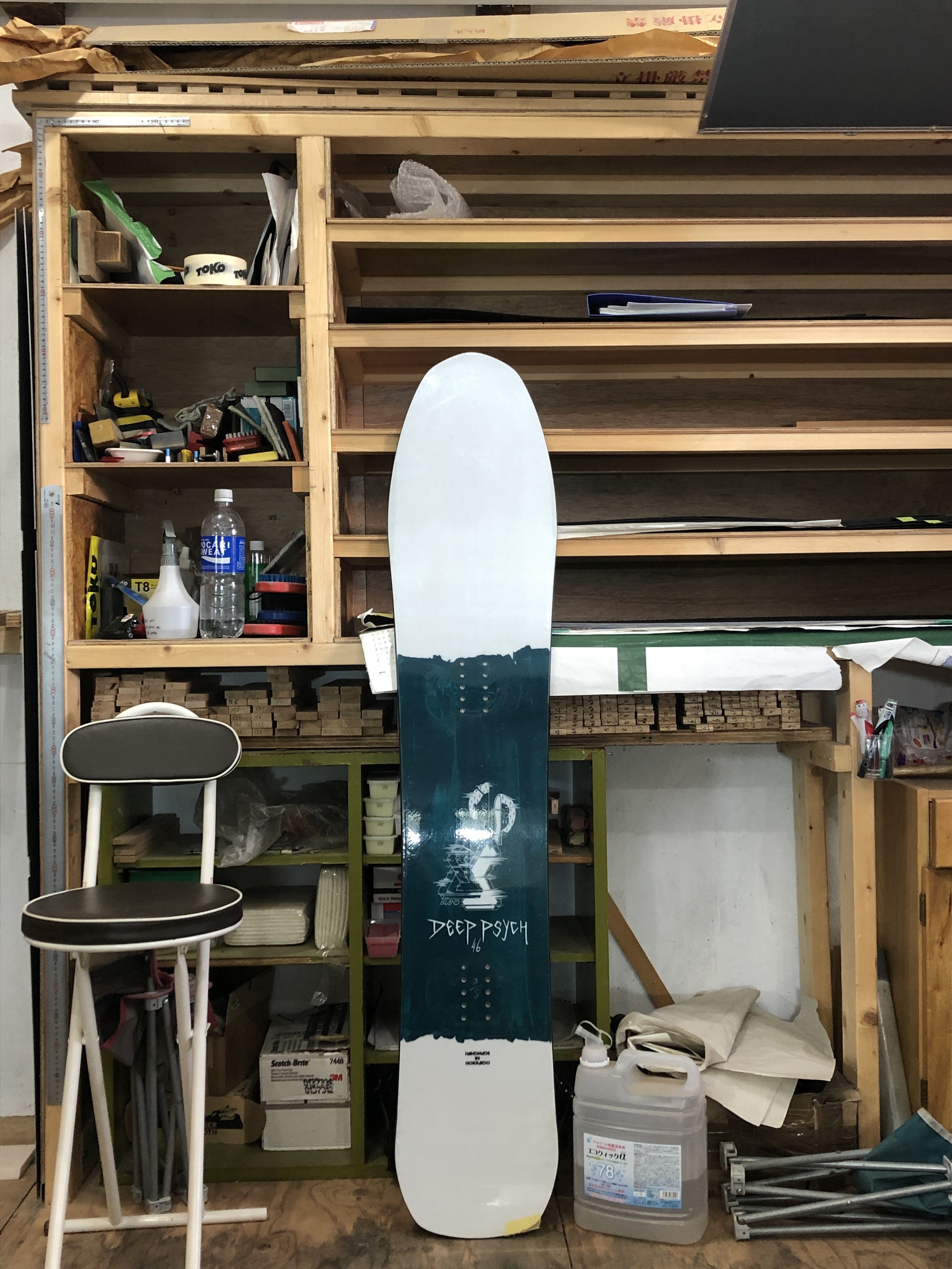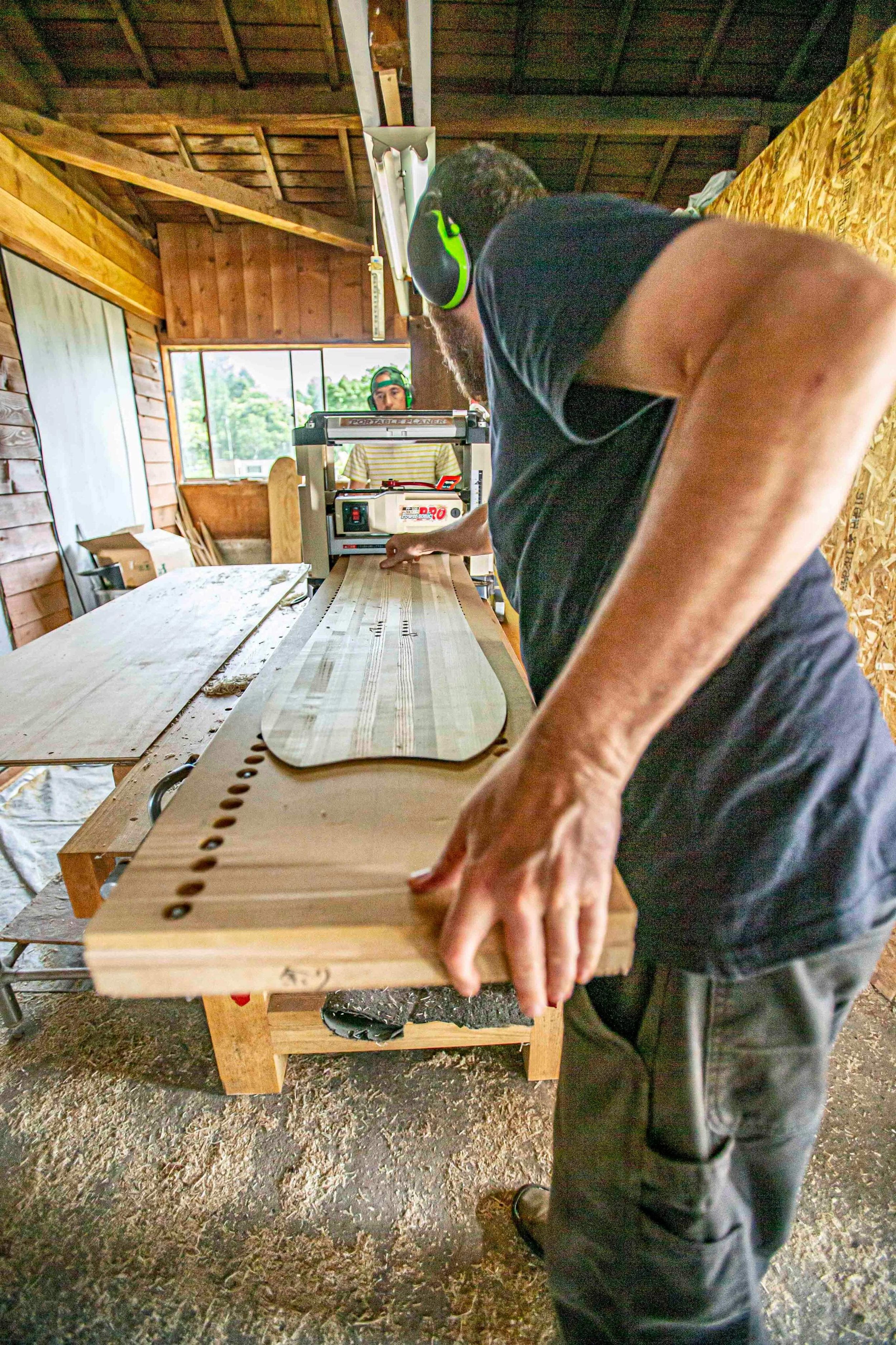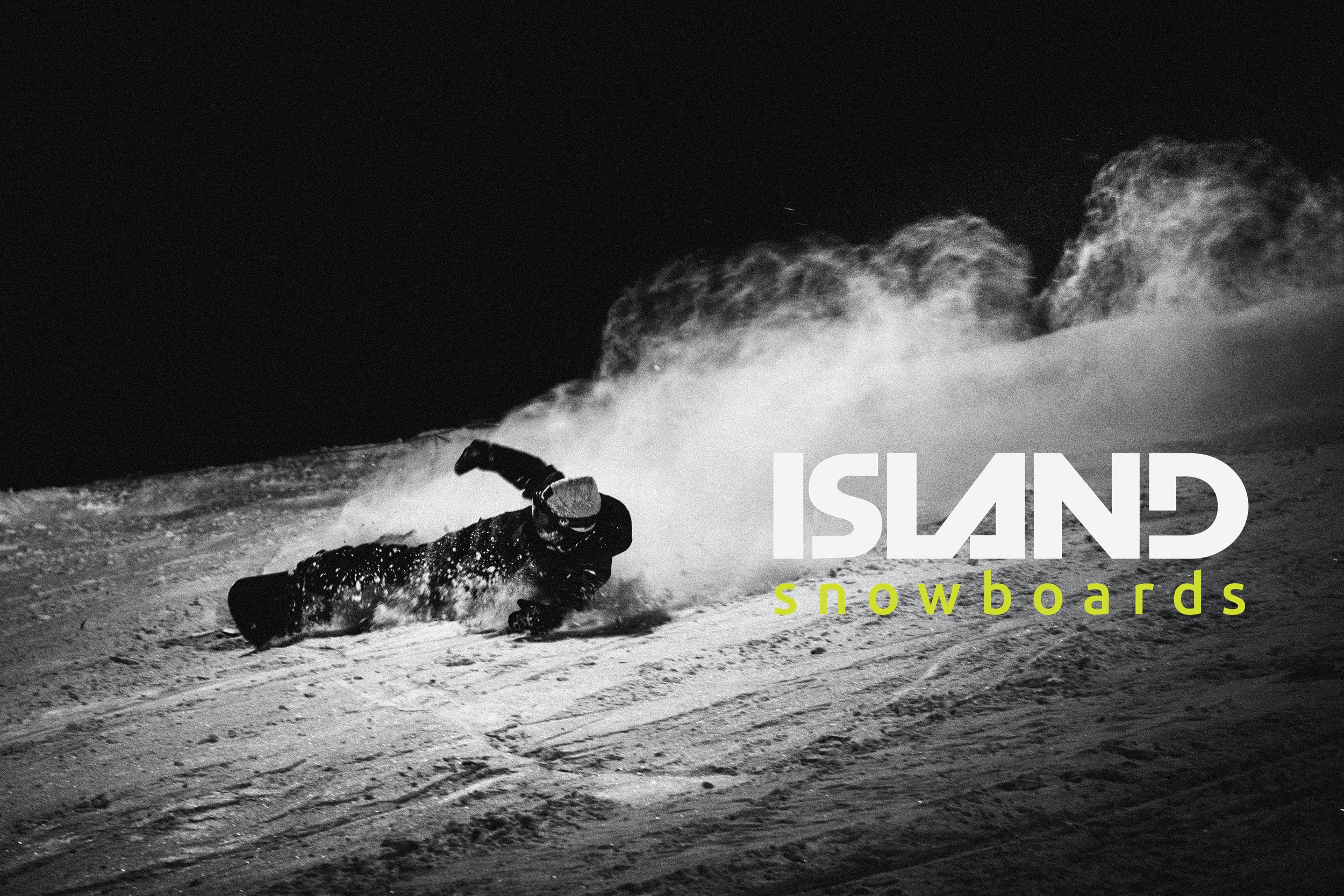Issue 46 | 5 Minutes with Owain Bassett & Stuart Cady, Island Snowboards
Top: Start Cady & Owain Bassett, Island Snowboards / Images by Toni Rodriguez (Courtesy of Island Snowboards) & Jacinta Sonja
Launched in 2020, Island Snowboards is a handmade snowboard company based in the Niseko region using Hokkaido-grown wood to make snowboards designed to ride deep powder and fresh corduroy. We speak to co-owners – and long-time Niseko locals – Owain Bassett and Stuart Cady, about their amazing journey, their process, and tips to get the best out of a snowboard.
Island Snowboards has been making waves in the snowboarding scene – both in Japan and internationally. Tell us a little about how Island Snowboards came about?
Owain (O): I have been snowboarding for more than 30 years. I’ve always had a curiosity about how things are made, especially things I’ve spent my life dedicated to. And also, as I wasn’t inspired by any snowboards out there that I wanted to ride, I thought I’d make my own. [laughter]
Stuart (S): I’ve known Owain pretty much the whole time I’ve lived here. It started with general conversations about snowboard designs, and how they were made. And it reached a point when Owain asked if I wanted to do it together with him.What’s unique about Island Snowboards?
S: The wood – locally grown ‘honoki’ (Magnolia obovata) and ‘tamo’ (Fraxinus mandshurica) – used in each snowboard is sourced from forests in central and southern Hokkaido, with every piece of timber hand-picked for its quality. The workshop where we make the boards is open to the public and time is taken to explain the design and construction elements that impact the functionality of the shape.
O: Our aim is to have each snowboard made with having the smallest possible carbon footprint, and designed to be ridden across a broad range of terrain. I wanted something true to Hokkaido, something that would both work well for what we needed in a snowboard, but also something native to the region.
There’s soul and a story behind each of these boards...
O: Yes, and you’d have a real connection to the board too. The last couple of boards I bought were from a brand from Colorado, USA, and one of the reasons why I bought them was because they were making the boards themselves. It’s a little like with furniture – you could buy something that is mass-produced, or you could buy something from a craftsman who made them.
When did you start making the first prototype(s)?
O: The idea came about 8–9 years ago, and I started making them about 7 or 8 years ago. I did quite a few years of trying, testing, and prototyping, until we got to a level where we were confident that it was actually viable, and the boards were of super high standard.
I’ve always liked making things; I’ve had some experience building and working with my hands. Making snowboards was through trial and error, lots of research, and talking to people. It was a challenging journey, but I knew that if I would be able to figure it out, I’d be able to do it.
Where are your inspirations from?
O: All the boards we’ve made are basically boards that myself and the friends that I ride with would want to ride. The colours and look are inspired by my favourite artist, Mark Rothko.
S: We wanted to make boards that everyone can have fun on, not just for conditions here in Niseko, but if you were to take it to Europe, or North America, or Australia, it would be fun for those conditions too.
Tell us about the different models you’ve made so far?
S: We’ve made 3 models so far – the first one was ‘Volume One (2020)’ – an all-mountain, all-rounder board. After that, we made ‘Deep Psych’ – a directional, carving powder board, and ‘Supernaut’ – a freestyle/park board for spins, and riding switch.
From what I’ve seen at the workshop, there are so many steps to making each of these boards. Tell us more about the process?
S: Yes, each board is made of several layers and each layer goes through a production process – the base & edges, the fiberglass, the wood core, the top sheet, as well as other elements, such as the inserts for bindings, and adding carbon stringers to enhance performance.
O: We use the best bases you can get for all our boards. There are some flat sections in Niseko that you’d need to be able to get through, and it’s important to have a good, fast base so that you’d be able to keep your speed.
How do you describe the conditions in Niseko?
O: Storm riding! European riding is bigger and steeper; and you get a mix of storm conditions and periods of blue skies. Here in Niseko, it’s stormy most of the time until the end of January /February. Blue-bird days do happen but you’re riding in storms most of the time. It’s great!
How should I select which model to ride?
S: You could select a board based on what you’re after – what you need in a snowboard – as well as how and where you’d like to ride. We’d like to understand the customer’s requirements before recommending a board. It sometimes surprises them that the board that they’d actually want, or is best for them would be different from that they had in mind or what has been recommended to them.
What’s one common misconception that people have when it comes to selecting a board?
S: The size (length) of the board is just a guide, and not the absolute measure. There isn’t a board that is too long.
O: Often we have a size in our minds, based on our height and weight, but there are other variables that affect the size and how it rides, way more than the number.
S: That having said, having a size in mind is a good starting point. Knowing where you want to ride, and how you want to ride, would also give us an indication of which board would be best for you.
Can anyone ride an Island Snowboard?
O: Yes! Anyone can ride an Island Snowboard. If you can link turns, you can ride an Island Snowboard.
What’s the best part of making your own snowboard?
S: You have a say in all of the elements that go into it!
O: And, of course, riding it!
––
Thank you Owain and Stuart!
web: island-snowboards.com / email: contact@island-snowboards.com / facebook & instagram: island.snowboards
address: 268-02 Takasago, Kutchan, Hokkaido 044-0076, JAPAN


